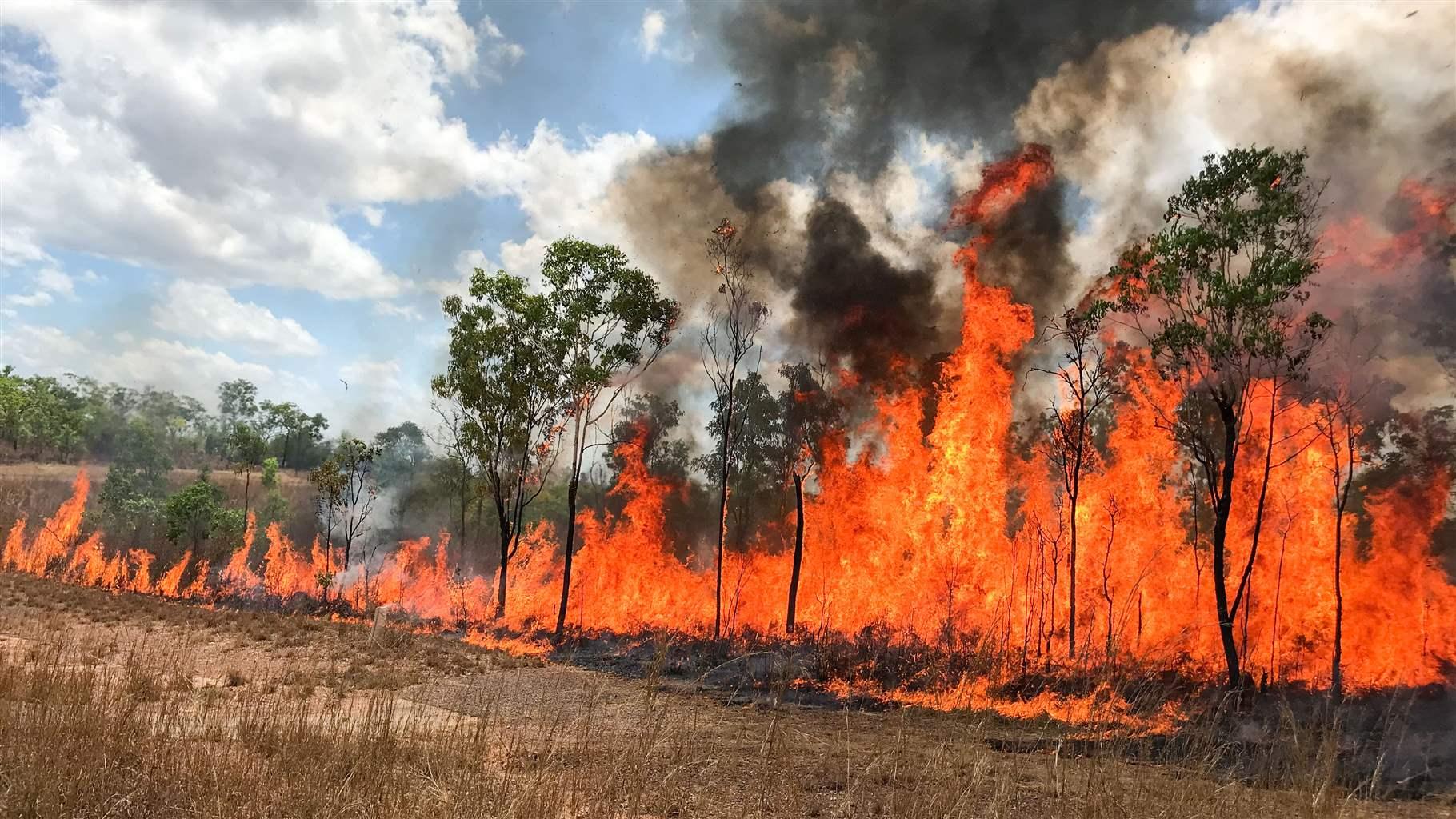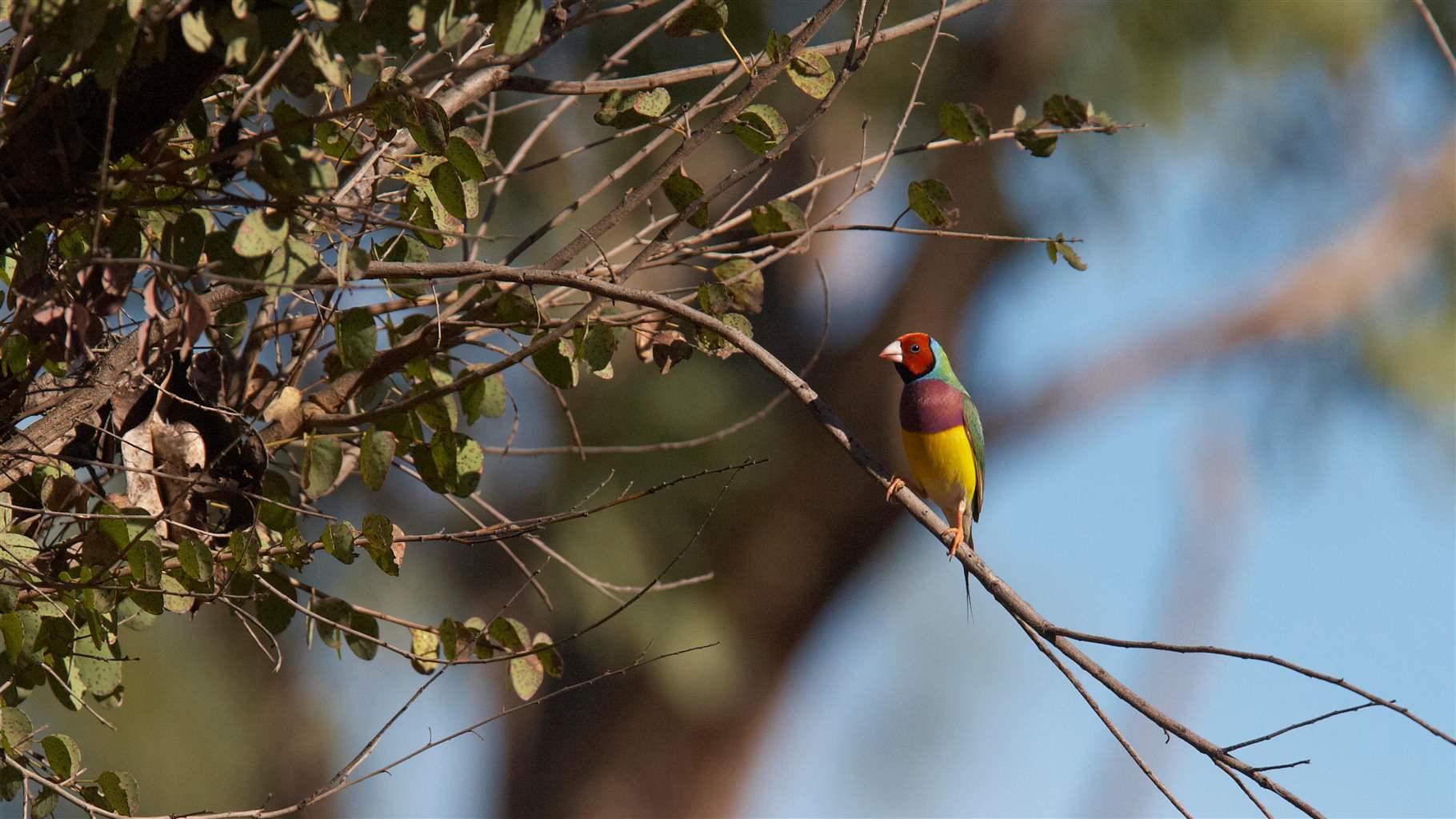In Australian Outback, Fight Against Invasive Grass Advances Slowly
Persistence of gamba grass in the Northern Territory shows need for sustained eradication effort

In the vast and diverse landscapes of Australia's Northern Territory, a green invader known as gamba grass (Andropogon gayanus) has been a significant environmental concern because of its role in exacerbating bushfires. It currently affects up to 15,000 square kilometres of the Northern Territory—roughly twice the size of Jamaica—but has the potential to spread up to 380,000 square kilometres.
Growing up to 4 meters tall, gamba grass becomes the perfect fuel for fire when dry, leading to hotter, faster-spreading, and more-difficult-to-control fires. This increase in bushfire intensity and frequency poses significant risks to wildlife, ecosystems, and human lives and property. But now, thanks to the advocacy of local residents, conservation groups and communities, the tide is beginning to turn on this major threat to native landscapes, homes and people.
Originally from Africa, gamba grass was introduced to Australia in the 1930s and '40s as a pasture species for cattle. However, this once-promising grass soon became a formidable adversary, spreading uncontrollably and outcompeting native vegetation in the Northern Territory's tropical savannas.
The ecological impact of gamba grass proliferation is profound. It alters savanna landscapes and leads to biodiversity loss. Native plants, adapted to the region's fire regime, struggle to survive in the altered conditions, affecting the fauna that depend on these plants for food and habitat.
In 2018, The Pew Charitable Trusts worked with local organisations, communities and experts to establish the Gamba Grass Roots alliance to raise awareness of the threats gamba grass poses to people, property, the nature tourism sector and the Northern Territory’s unique landscapes and wildlife such as Kakadu National Park and the endangered Gouldian finch.
Over the past six years, through the alliance, Pew has told the stories of how landholders, communities and firefighters have managed gamba grass and battled severe bushfires. We have also advocated for increased funding and support for government programs that have proved effective against the spread of this invasive plant. During this time, the Northern Territory government has slowly turned its focus—and budgets—towards the problem, establishing a free herbicide program alongside support for park rangers, Indigenous ranger groups and communities in their efforts to eradicate gamba grass.
And in 2022, the federal government committed $9.8 million towards gamba grass eradication programs, which will be crucial in bolstering existing strategies and developing new ones to tackle this crisis.
Collaboration among government agencies, scientists and Indigenous communities, especially in the Northern Territory, has been pivotal in this progress. This has included a range of strategies, from physical removal and herbicide application to controlled burning. Indigenous land managers have been instrumental in controlling gamba grass through strategic, low-intensity fires, known as "cool burns."
However, the challenge of eradication is immense because of the grass's rapid regrowth, the vast areas it covers and still-limited resources. The battle against gamba grass is further complicated by the impacts of climate change, which could drive additional spread of this invasive species. Continued research, funding and collaborative management are essential in adapting to these changing conditions and finding effective solutions.
The threat posed from gamba grass is not limited to the Northern Territory. Across the border in Western Australia, the Gamba Grass Eradication Program, a public-private partnership, has had great success: In 2022 the program said it found only eight plants in the entire state, down from 3,000 in 2018.
This program’s approach, which has involved meticulous monitoring and prompt eradication of new infestations, sets a precedent for other regions facing similar challenges. Western Australia’s success demonstrates the value of early detection and rapid response strategies in managing invasive species.
Public awareness and community involvement also play a critical role in managing invasive species, for example through prompt reporting of sightings of the plant. Community-based programs that involve residents in eradication efforts—such as the Gamba Action Program in the Northern Territory—have proved effective, as they harness local knowledge, support individual and coordinated efforts, and foster a sense of ownership and responsibility towards the environment.
If the Northern Territory hopes to significantly reduce the area infested, a guarantee for ongoing program support from the government will be key. Despite the 2022 boost in federal funding, the Gamba Action Program remains underfunded and ill-equipped to support landholder demands for eradication. Gamba grass is also threatening biodiversity—and by extension future tourist visits—in Litchfield National Park; the plant has infested more than 20% of the park. Further, the "Gamba Army" program of dedicated ranger crews operate on a fixed, short-term budget that the government should increase and extend.
The struggle against gamba grass in Australia is a multifaceted issue that requires a combination of government funding, scientific research, community involvement and innovative land management practices. The success in Western Australia provides a beacon of hope, while the ongoing efforts in the Northern Territory showcase the complexities of environmental management. It is imperative to continue these efforts and learn from both successes and challenges to protect Australia's ecosystems from this invasive threat.
Mitch Hart works on Pew’s protecting Australia’s nature project.













